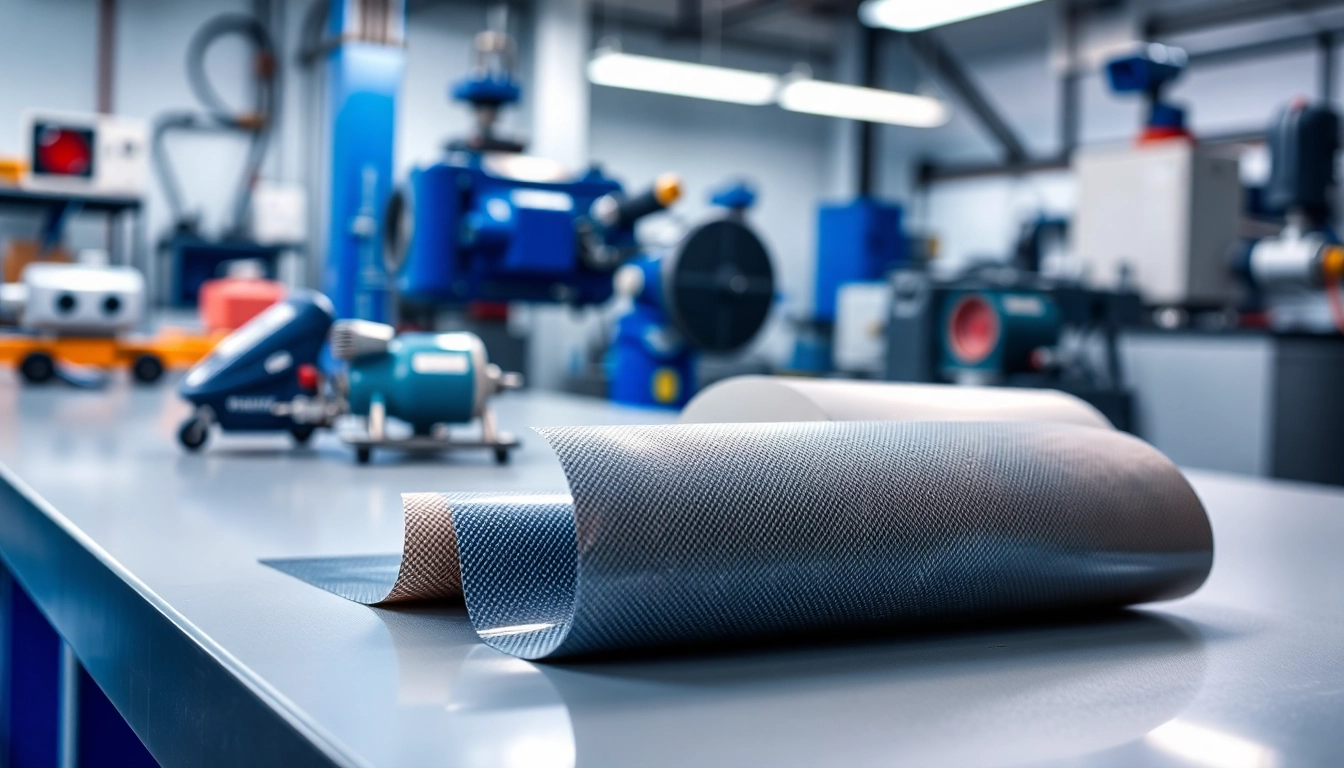Understanding Adhesive Films and Their Applications
Adhesive films play a pivotal role in various industrial applications by providing reliable bonding solutions. These films are pre-formed layers of adhesive applied to a carrier substrate, enabling efficient and precise bonding between surfaces. They can be activated through various methods such as heat or pressure, making them versatile for different uses. For comprehensive insights into the types, characteristics, and usage of adhesive films, you can visit https://www.makobond.com/adhesives-films.
What are Adhesive Films?
Adhesive films are specialized materials that provide bonding solutions in various industrial environments. Typically made from polymers, these films offer consistent thickness and controlled properties that are crucial for successful applications. Unlike traditional adhesive methods, adhesive films facilitate a cleaner application process, reducing mess and potential contamination.
Key Characteristics and Benefits
Adhesive films are known for their unique properties which make them suitable for a wide range of applications:
- Uniform Thickness: Adhesive films maintain a consistent thickness, ensuring an even bond across the surface area.
- Versatile Activation: They can be activated through heat, pressure, or solvent, allowing flexibility in application methods.
- High Temperature Resistance: Many adhesive films can withstand extreme temperatures without losing their adhesive properties.
- Minimal Waste: The precise application of adhesive films minimizes excess material and reduces waste.
- Easy to Use: They simplify the bonding process, making them ideal for streamlined production.
Applications in Various Industries
Adhesive films are widely used across multiple industries due to their customizable properties and versatility. Key areas of application include:
- Aerospace: Used for composite bonding in aircraft, ensuring structural integrity while minimizing weight.
- Automotive: adhesives are crucial for bonding elements like panels and sound-deadening materials, improving vehicle performance.
- Electronics: Employed in the assembly of devices where precision and reliability are paramount.
- Defense: Used for bonding components in military applications requiring high durability and resistance.
Types of Adhesive Films Available
Overview of Film Types
There are various types of adhesive films tailored to meet specific bonding requirements:
- Epoxy Films: Known for their strong bond and excellent thermal stability, ideal for aerospace applications.
- PVB Films: Offer good flexibility and transparency, often used in automotive windshields.
- Polyurethane Films: Require flexibility and impact resistance, making them suitable for diverse applications.
- Acrylic Films: Known for their ease of use and clarity, ideal for high-performance applications.
Technical Specifications and Features
Choosing the right adhesive film involves understanding its technical specifications, including:
- Adhesive Strength: Measured in pounds per square inch (PSI), this indicates the bond’s strength.
- Temperature Resistance: The maximum temperature the film can withstand without losing adhesion.
- Cure Time: The period required for the adhesive to attain optimal bond strength.
- Surface Compatibility: Adhesive films are designed for specific materials such as metal, plastic, or composites.
Choosing the Right Film for Your Needs
Selecting the appropriate adhesive film can be daunting. Consider factors such as the environment in which the film will be used, the materials needing to be bonded, and specific performance requirements. Consulting with material specialists can provide further insights tailored to specific operational contexts.
How to Optimize Adhesive Film Use
Preparation Techniques for Successful Bonding
The effectiveness of adhesive films greatly relies on proper surface preparation. This may involve cleaning the surfaces to remove grease, dirt, or contaminants that can hinder adhesion. Techniques can include chemical cleaning, abrasive cleaning, or using cleaning agents tailored for the specific materials involved.
Activation Methods Explained
Activation methods depend on the type of adhesive film used. Common activation techniques include:
- Heat Activation: Involves applying heat to melt the adhesive, ensuring a proper bond.
- Pressure Activation: Involves applying pressure to ensure that the adhesive contacts both surfaces adequately.
- Solvent Activation: Involves applying a solvent that prepares the adhesive for bonding.
Common Mistakes to Avoid
To optimize the effectiveness of adhesive films, avoid these common errors:
- Insufficient surface preparation can lead to weak bonds.
- Failing to use the correct activation method can result in poor adhesion.
- Neglecting to follow manufacturer’s instructions regarding temperature and pressure can jeopardize bonding integrity.
Performance Metrics of Adhesive Films
Testing Methods for Strength and Durability
Comprehensive testing methods are crucial in evaluating the performance of adhesive films. Common tests include:
- Tensile Tests: Measure the strength of the bond under pulling forces.
- Peel Tests: Evaluate the bond’s ability to resist peeling forces.
- Shear Tests: Measure how well a bond can withstand shear stress.
- Environmental Resistance Tests: Assess the film’s durability under varying environmental conditions, including temperature fluctuations and humidity.
Evaluating Performance in Real-World Applications
It’s essential to assess the adhesive film’s performance under actual use conditions. This might involve application trials to gauge how well they perform in bonding various material combinations. Real-world feedback can aid in fine-tuning product selections for specific applications.
Continuous Improvement and Innovation in Adhesive Films
As industries evolve, so do the needs for adhesive films. Continuous research and innovation drive the development of films with enhanced properties, such as improved thermal stability, greater flexibility, and environmental resistance. Keeping updated with the latest advancements is vital for maintaining competitive performance.
Future Trends in Adhesive Film Technology
Emerging Materials and Processes
The future of adhesive films will likely see the integration of new materials and processes that improve functionality while reducing environmental impact. For example, bio-based adhesives are gaining traction, promoting sustainability without compromising performance.
Sustainability Considerations in Adhesive Films
With growing emphasis on sustainability, manufacturers are focusing on developing eco-friendly adhesive films. This includes recycling capabilities and reducing harmful emissions during production. Adopting these methods aligns with corporate social responsibility and consumer preferences for sustainable products.
Predicting Market Developments and Demands
As industries adapt to technological changes and sustainability demands, trends in adhesive film technology will reflect these adjustments. Anticipating market shifts and adapting adhesive solutions will be crucial for manufacturers looking to stay relevant. Embracing innovation, understanding regulatory changes, and incorporating customer feedback will be essential strategies moving forward.

Leave a Reply